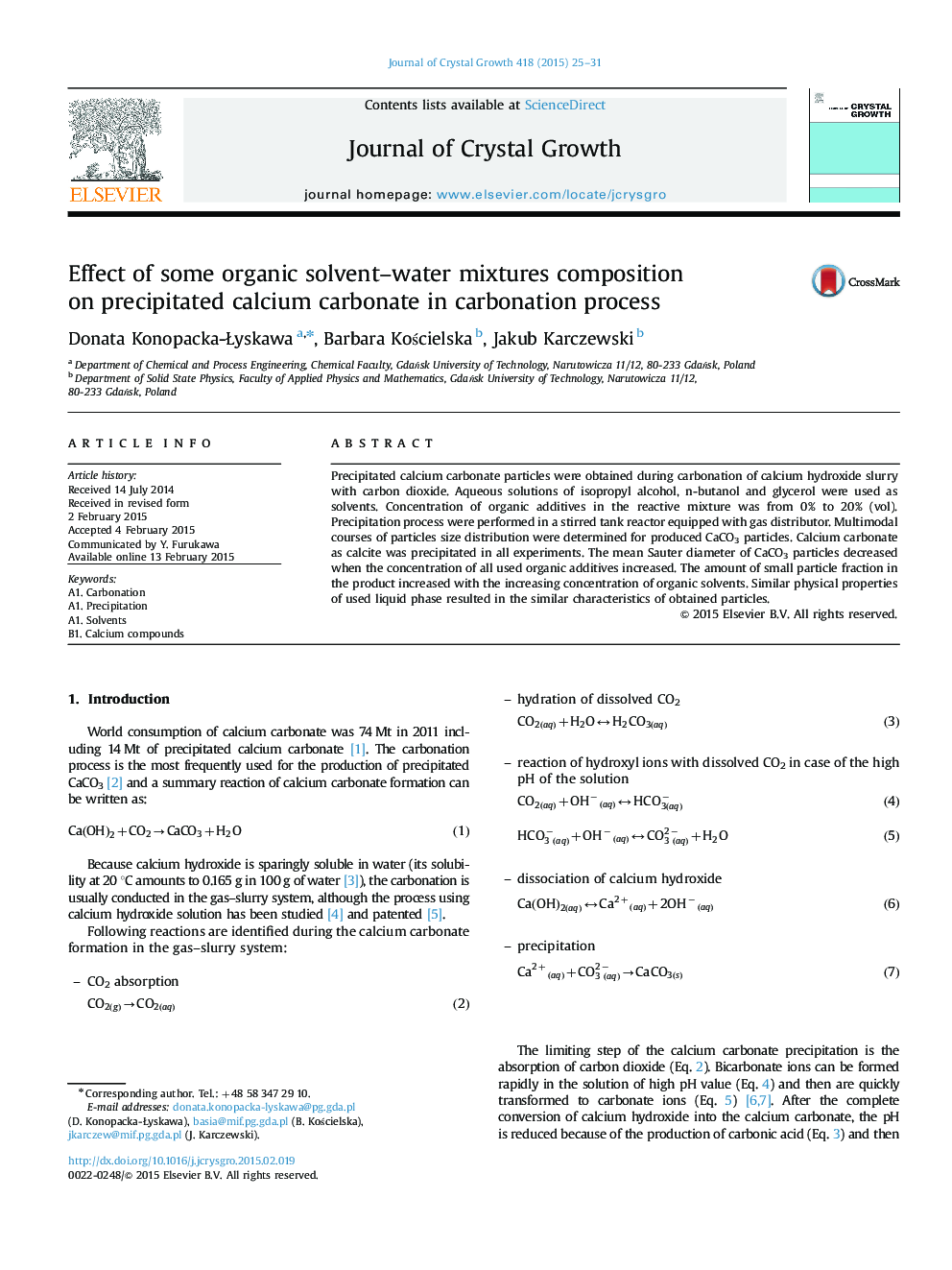| Article ID | Journal | Published Year | Pages | File Type |
|---|---|---|---|---|
| 1790091 | Journal of Crystal Growth | 2015 | 7 Pages |
•Calcium carbonate was precipitated via carbonation from calcium hydroxide suspension.•Organic additives in reactive mixture were isopropyl alcohol, n-butanol and glycerol.•Calcium carbonate were characterized by polymodal particle size distributions.•Characteristics of obtained particles depend on physical properties of used solvents.
Precipitated calcium carbonate particles were obtained during carbonation of calcium hydroxide slurry with carbon dioxide. Aqueous solutions of isopropyl alcohol, n-butanol and glycerol were used as solvents. Concentration of organic additives in the reactive mixture was from 0% to 20% (vol). Precipitation process were performed in a stirred tank reactor equipped with gas distributor. Multimodal courses of particles size distribution were determined for produced CaCO3 particles. Calcium carbonate as calcite was precipitated in all experiments. The mean Sauter diameter of CaCO3 particles decreased when the concentration of all used organic additives increased. The amount of small particle fraction in the product increased with the increasing concentration of organic solvents. Similar physical properties of used liquid phase resulted in the similar characteristics of obtained particles.
